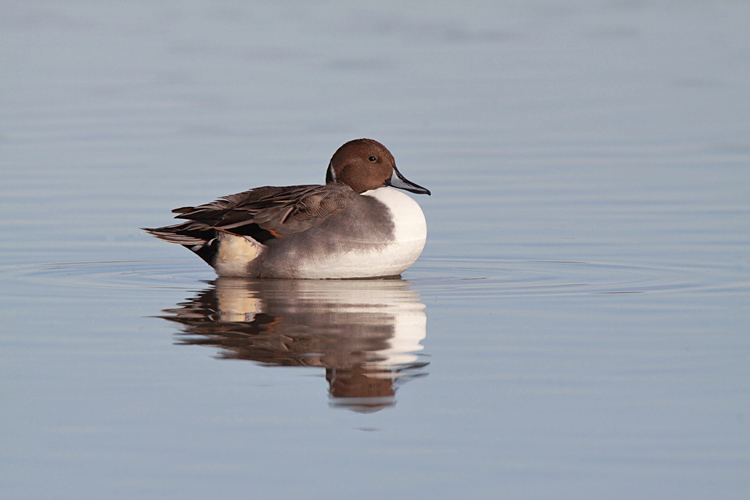
Location: Bosque Del Apache, Socorro, NM
Date: 2008-11-24
Lens: Canon 600mm IS F4 + 1.4x II Converter

 Northern Pintail
Anas acuta
Northern Pintail
Anas acuta
 Description
Description
This birds name is derived from its long, slender, pointy tail. Personally, I think these are one of the prettiest ducks around. Northern Pintails do not maintain a fixed breeding or wintering region. Many of these birds completely bypass the "usual" breeding area of Central Canada and the Northern US to breed in Alaska. Some change from year to year. Likewise, they do not all winter in the same region. Some may fly farther South, while others may spend one year in the Southeastern US and the next year here in California.
This bird is one of the most abundant waterfowl species with its population ranging between 2 - 10 million over the past 50 years. Since the females do the egg incubation, the males are free to mate again. They mostly eat plant matter, but also feed on seeds, small crustaceans, amphibians, and fish in smaller quantities. Like many other waterfowl, they will swallow pebbles to help grind up and digest their food.
General: 21 to 30 inches in length.
Male: Dark brown head. Black bill. Distinctive white stripe down both sides of a dark brown slender neck. White chest and underparts. Grayish upperparts, black wings bordered with white. Long, slender, pointy black tail. Molting males look similiar to females in late summer.
Female: Similiar to male in shape, but with shorter tail. Female is lighter brown and has a mottled color body.
Lakes, freshwater and brackish marshes, and open wetlands. Breeds in wetlands.
 Nesting
Nesting6-9 pale greenish-buff eggs with a 22-25 day incubation period, which is done by the females. Fledging occurs 36-57 days after hatching. The nest is a shallow bowl of grass lined with down, and is usually hidden in tall vegetation.